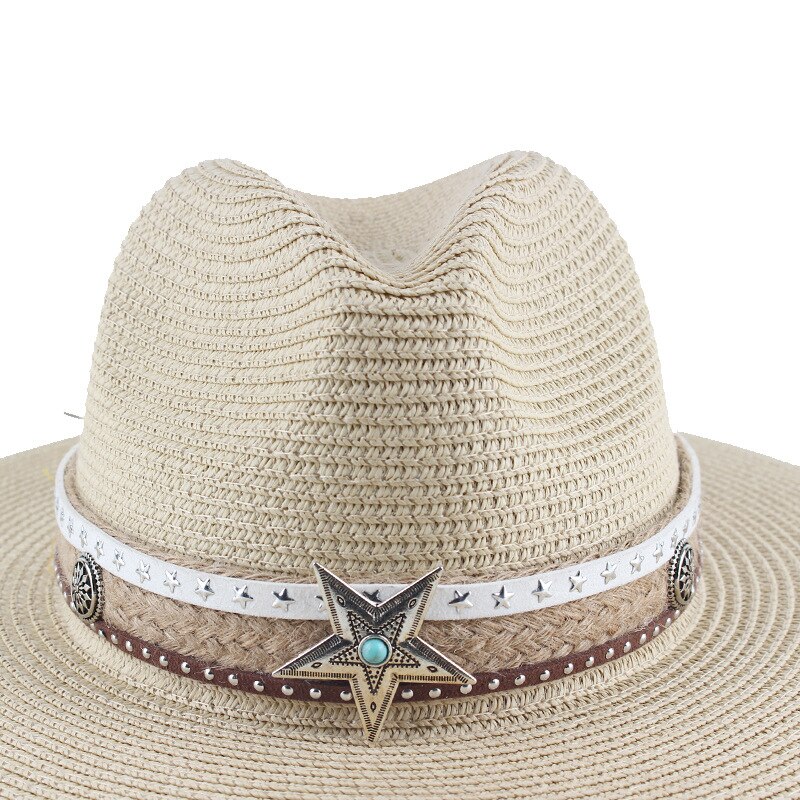
Cowboy hats, with their distinctive wide brims and high crowns, have become an enduring symbol of the American West and the adventurous cowboy lifestyle. These iconic hats trace their roots back to the early 19th century, evolving over time to become a timeless fashion statement and a hallmark of Western culture. Additionally, though often overlooked, have also played a significant role in the history of these classic headpieces, adding a touch of personal flair and cultural significance.
Origins of the Cowboy Hat: A Fusion of Style and Functionality
The history of it can be traced back to the vaqueros, the skilled Mexican horsemen who roamed the vast landscapes of the American Southwest. In the early 1800s, these vaqueros brought their distinct style of wide-brimmed hats to the region, which provided excellent protection from the sun, rain, and wind. The hats were made from materials like straw or felt, ensuring durability and practicality for the rugged cowboy lifestyle.
As the American cowboy culture evolved, so did the design of the cowboy headwear. The high crown allowed for better insulation and provided ample space for airflow, keeping cowboys cool during long hours of work. The wide brim, often shaped to suit personal preferences, shielded them from the elements and even served as a makeshift water basin in desperate times.
The Cowboy Hat Bands: A Story of Identity and Pride
While the it’s functionality was key, these emerged as a way for cowboys to add a touch of personal identity and cultural pride. Initially, hat bands were practical, often used to hold decorative feathers or personal belongings like tobacco or playing cards. Over time, they evolved into an opportunity for cowboys to showcase their individual style and signify their affiliation with certain ranches or groups.
Hat bands often featured elaborate designs, with various materials such as leather, beads, silver conchos, and even horsehair woven into intricate patterns. Each hat band was a reflection of the wearer’s personality and experiences, serving as a silent storytelling piece that conveyed their journey through the Wild West.
The Enduring Legacy of Cowboy Hats and Hat Bands
Today, cowboy hats continue to be iconic symbols of Western heritage, cherished by rodeo performers, ranchers, and Western enthusiasts alike. Their timeless appeal transcends cultural boundaries, making them a beloved fashion statement around the world. Headwear, too, have maintained their significance, adding a touch of individuality and authenticity to each hat they adorn.
Whether donned for practical purposes on a cattle drive or worn proudly at a rodeo event, these continue to embody the spirit of the American West and evoke a sense of adventure and freedom. As they have for generations past, these classic headpieces and their bands remain cherished accessories, a testament to the rich history and enduring allure of cowboy culture.
Evolution and Popularity: The Influence of Cowboy Hats
As the American West expanded and cowboys became an integral part of the nation’s folklore, these gained widespread recognition and popularity. Their representation in popular culture, through movies, television shows, and literature, further solidified their status as a symbol of rugged individualism and the Wild West.
The evolution of cowboy hats also saw adaptations to suit various needs. The Stetson Company, founded by John B. Stetson in the 1860s, played a crucial role in shaping the modern hats. Stetson’s “Boss of the Plains” hat became the archetype for cowboy headwear, featuring a wide brim, high crown, and a simple yet timeless design.
These were no longer confined to ranches and rodeos; they made their way into mainstream fashion as well. From Hollywood icons like John Wayne to fashion-forward individuals in urban centers, the allure of it transcended geographical boundaries, becoming a beloved fashion statement worldwide.
Hat Bands as Cultural Artifacts
The significance of cowboy hat bands expanded beyond individual expression. For Native American tribes and Hispanic communities in the West, hat bands became cultural artifacts, reflecting their heritage and traditional craftsmanship. Intricate beadwork and symbolic patterns were woven into hat bands, preserving stories and traditions passed down through generations.
In the modern era, artisans and craftsmen continue to create hat bands with a blend of traditional techniques and contemporary aesthetics. These unique bands not only add beauty to it but also serve as a bridge between cultures, celebrating diversity and the shared love for the cowboy way of life.
A Timeless Symbol of Style and Adventure
Through the centuries, these have remained relevant, continuing to embody the spirit of adventure, resilience, and individuality. The enduring legacy of it is a testament to their ability to transcend time and trends, remaining a staple in both Western culture and the wider world of fashion.
As we don our cowboy hats and cherish the artistry of hat bands, we honor the rich history of the American West and the adventurous spirit of those who shaped it. From cattle drives to rodeo arenas and beyond, these iconic hats and their bands continue to symbolize the pioneering spirit of the cowboy and the enduring allure of the frontier.


